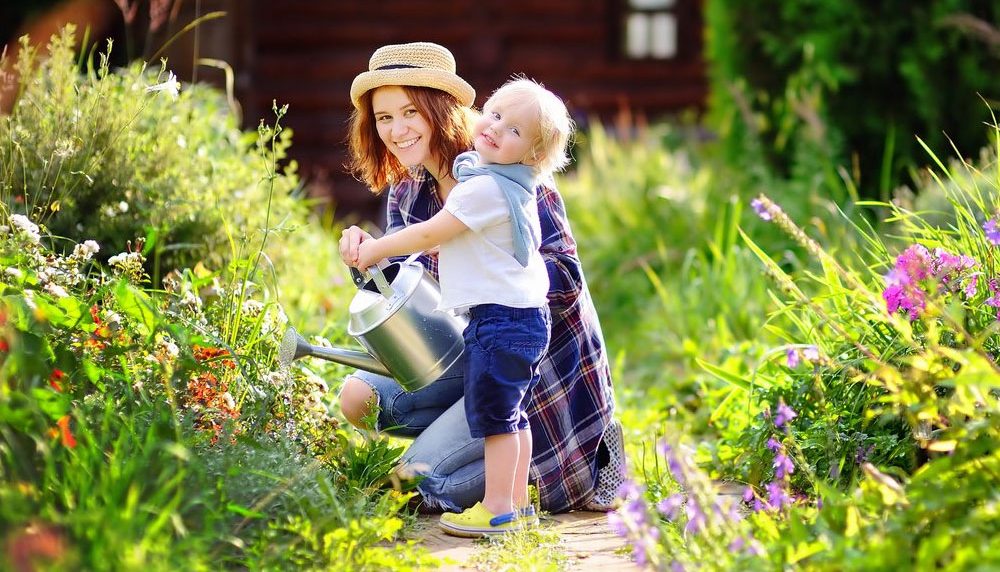Starting a garden from scratch is as rewarding as it is challenging, but nothing worth doing is ever that easy, right?
Whether you’ve decided to take your first steps into gardening, or you’re a keen amateur gardener who has recently moved into a new property that’s not quite the oasis of plants, flowers, and crops that you’d like it to be, this article is here to help.
From proper planning, to getting the soil right, our guide on how to build a garden from scratch will take out a lot of the guesswork, providing you with information and filling you with the confidence needed to create your own dream garden.
Starting a garden from scratch – Planning and implementation
Diving straight in without having a well-drawn out plan, or even a general idea about what your garden will consist of is where may fall at the first hurdle. By spending a little time with pen and paper, you can get all your ideas plotted out and see if they really make sense as a collective whole, or whether some adjustments need to be done.
Some things to think about when planning are:
The shape and dimensions of your garden.
When starting a garden from scratch, Sketch out the general shape of the garden and then grab a tape measure to see what space you have to work with. Some gardens might appear at first glance to be smaller, larger, wider, etc. than they actually are, so getting the measurements down on your plan is extremely helpful.
If you have just moved into a new house, it’s always best to wait a year before starting to work on the garden.
This will give you time to see what has previously been planted, or what grows there naturally from season to season, and this will help you plan accordingly. I know it’s hard to wait, but you can spend the time getting the rest of the house sorted out first, and also planning your future garden.
What materials and tools are going to need to build your perfect garden?
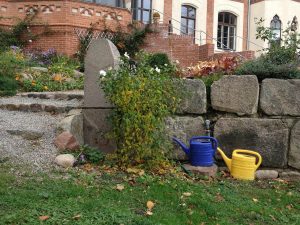
Will there be any walls or rockeries? Raised beds? Always better to plan ahead and get a list of things down, but don’t buy them just yet as plans might change.
How much free time are you going to have to tend to your garden once it’s completed?
If you are busy with work and other activities, you just might not have the time needed to care for those specific plants that you have your heart set on, so you need to be realistic. Choose plants and crops that suit your schedule. It’s better to have a nice looking, healthy garden filled with your ‘second choices’ than to go with plants you can’t possibly care for and then watch them die.
If you’ve moved into a new area?
Take in your surroundings and see what types of plants grow naturally around there. These are obviously great choices for your garden as they have a high rate of success and will probably not need tending to all that much. Starting a garden from scratch isn’t just about transforming your surroundings, it’s also about embracing the nature around you too.
What are you going to keep or get rid of?
There might be some elements of the current garden that you wish to keep or salvage for another use. By writing a list of things to keep, it’ll stop you throwing the baby out with the bath water, so to speak.
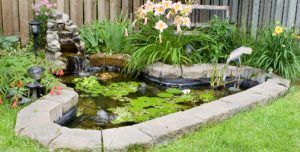
If you already have a lawn, which is very likely in the UK, are you going to sacrifice the whole thing in order to plant things? Or are you going to save portions of it?
If you are going to get rid of the lawn, how do you plan to do it? Using chemicals is not something we would recommend, but there are other, natural ways such as sheet mulching and solarisation that you could look into, but these methods take time. Then of course, you could always just grab that trusty old spade and dig it up. Labour intensive, sure, but fairly quick and effective.
How will your new garden be arranged and don’t forget furniture?
This is the bulk of the planning, where you decide on what plants and crops will go where. Make sure you have a good idea about how much space your chosen plants will need to grow, the ideal growing conditions, etc. and then you can sketch out on your plan, the designated areas for them.

You need to take in consideration the way certain plants will look when in fully grown and how their form, textures, and colours will compliment or contrast each other. This is probably the most fun part of starting a garden from scratch, but also needs careful attention to detail.
- Best Patio Sets
- Best Garden Table and Chairs
- Best Pop Up Gazebo
- Best Gazebos
- Cantilever Parasols
- Best Table Top Heaters
- Top 5 Best Shade Sails Reviewed
At this point you might have to adjust your plans.
Let’s say you originally wanted to plant two types of crop that both need to be in a lot of sunlight, but the tree at the end of the garden you want to keep is going to throw shade in one of those spots. Well, then you have a decision to make: keep the tree and plant something else, or remove it to go with your original plan. This is just one example, but the point is, sometimes you need to be flexible and adjust your plans as things take shape
Will you be needing a greenhouse?
If you’re serious about growing crops and plants in the UK, especially if you live in the Northern regions, you’re probably going to need a greenhouse, and so you’ll need to plan for the space and an appropriate spot for it in your new garden.
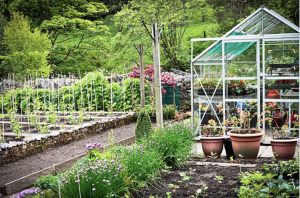 Greenhouses are almost essential in Britain. They help you shelter certain plants through the winter months, and also give you a controlled place in which to get seedlings going before it comes time to plant them in Spring.
Greenhouses are almost essential in Britain. They help you shelter certain plants through the winter months, and also give you a controlled place in which to get seedlings going before it comes time to plant them in Spring.
Another thing you need to think about is the type of soil you need in order for the plants you have chosen to thrive.
Not all plants and crops grow the best in the same type of soil. Do a bit of research to see what pH level is best for each plant, and also whether they require a lot of watering, or if they are drought resistant. Soil that contains too much clay or is too sandy might work for some plants but be terrible conditions for others, due to the different drainage those soil types provide.
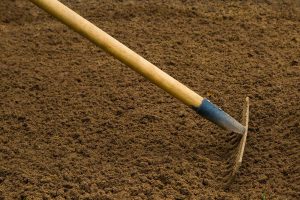
Preparing the soil
One of the benefits of starting a garden from scratch is that you get to test and prepare the soil exactly to your needs, giving your plants a better chance and reaching their full potential.
When you know which plants need which kind of soil, you can now go about preparing those areas.
Most of the time you will need to add compost or well-rotted manure to the soil to add nutrients. We have an article on how to make great compost right here on this site. It’s really easy, and is vital for a healthy garden. You can also buy ready made compost if you don’t want to wait, or if you don’t have a great deal of free time.
Sometimes, the pH of your soil is too acidic, so you’ll need to raise it before planting.
This isn’t too difficult to achieve though, and by just adding lime to the soil or compost, you can usually bring the pH balance to where you want it. If you’re going to use traditional lime, it might take months for it to take effect, but for those of you in a hurry, there are fast acting lime products out there.
When time comes for planting, do your homework on what works best with those specific plants.
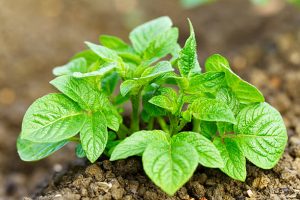
Whether it’s planting directly into the garden soil, or getting things started in the greenhouse, this site is filled with guides for all kinds of plants, flowers, and crops, and doing things the right way from the start is going to give you the results you want. Spending half an hour reading and soaking up the information we’ve provided is certainly worth it.
Caring for your garden.
Once you’ve planned, dug, planted, and done everything else you needed to do, you can sit back and do nothing right? Haha, of course not. A gardener’s work is never done. Just like with planting, you need to educate yourself about the best ways to care for your garden and the plants in it. What are the best watering schedules? Should I invest water automatic system? Do they need fertiliser? What about mulching?
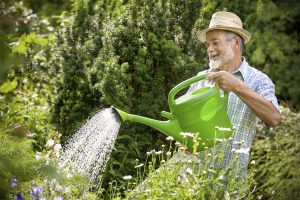
There are so many things to learn about properly caring for a garden, but it’s a great journey; educating yourself and gradually becoming more knowledgeable is very fulfilling. This website, and others like it, are packed full of information on how to plant, grow, and care for a huge variety of plants, and we’re sure you’ll find what you need if you spend a bit of time exploring online.
Before we finish this article, I just like to give people trying to build a garden from scratch for the first time a bit of advice: Don’t take yourself too seriously. We all want our crops and flowers to grow perfectly the very first time, but it is often the case that they don’t, and that’s fine.
Don’t see it as failure, see it as a learning process. Take what you learned, and then try again, and again if necessary. If something really isn’t working after three or four seasons of trying, it might be best to try something else, as that probably means that the climate or other factors in your area are just not right for that plant. Gardening is supposed to be fun and rewarding, always remember that.
